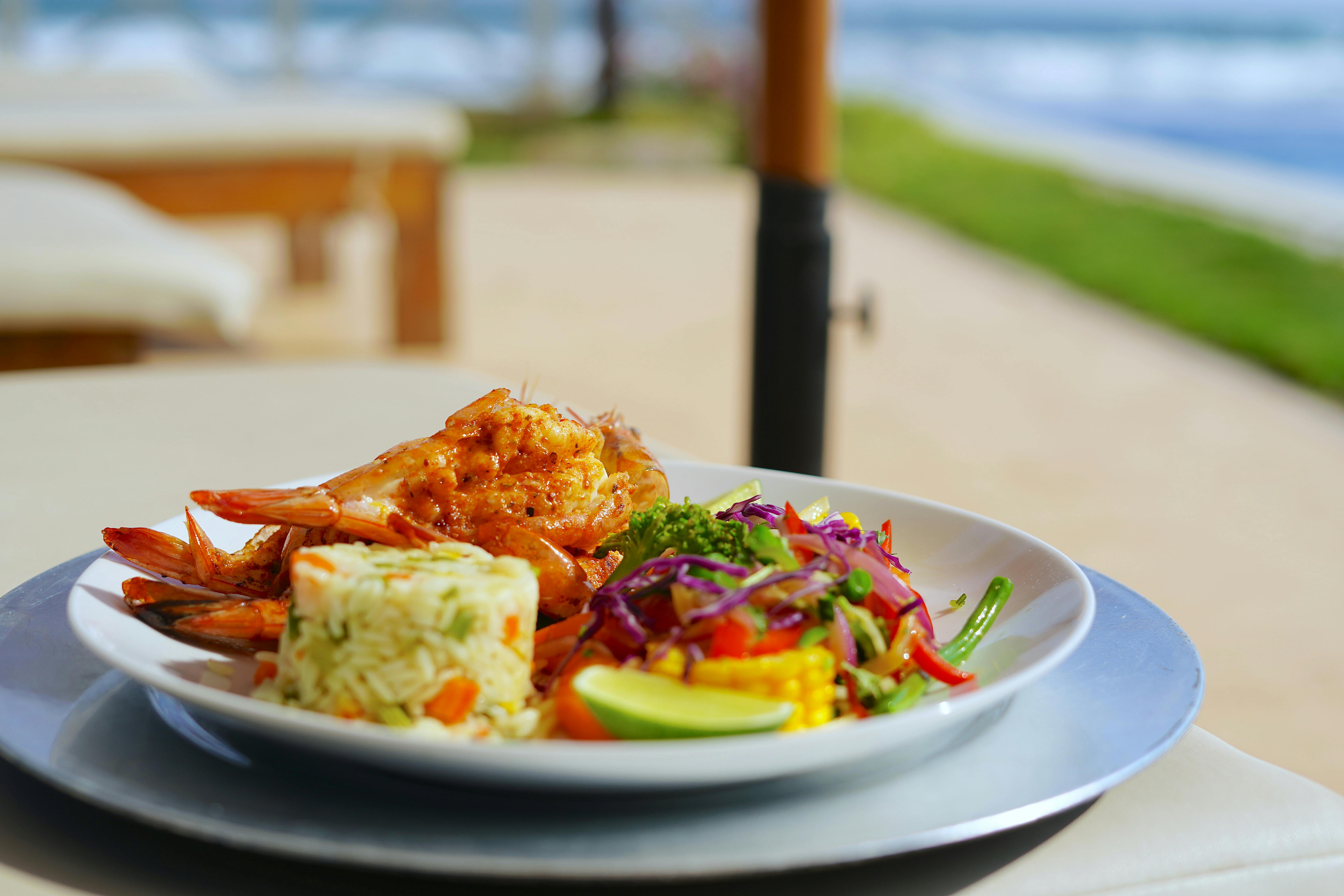El Salvador Healthy Eating: Fast Family Meals With Local Foods
Ever watched a Salvadoran street vendor flip fresh pupusas with swift, practiced hands—smell of maize in the air, sun on your back, families gathered all around? That memory sticks with me. And, oddly enough, it’s where my curiosity about local healthy eating truly began. What I’ve realized after years of working with Salvadoran families—and, admittedly, making plenty of home-cooked mistakes—is that eating well here doesn’t require crazy diets or “superfood” trends imported from overseas. Sometimes, nourishment really is about getting back to basics, leaning into the foods that shaped your childhood and—here’s the kicker—adapting them for today’s chaotic, sometimes bonkers, family routines.1
So, how do you actually build healthier eating habits that fit your real life in El Salvador—especially if you’re short on time, energy, or money? This easy-to-follow guide draws on everything from street market wisdom to nutrition science, blending expert advice and lived experience, plus a pretty solid dash of authenticity. We’re talking simple market swaps, time-saving meal-prep hacks, and—truthfully—a bit of myth-busting about “good” versus “bad” traditional foods.
Why Local Foods Matter for Salvadoran Families
To put it bluntly: why bother with “local” foods when supermarkets offer processed shortcuts that promise convenience? For starters, locally sourced Salvadoran foods—beans, plantains, squash, loroco, tomatoes, and yes, even pupusas—are loaded with culture, nutrients, and taste. Recent research shows that families who anchor their meals around local ingredients not only eat more nutrient-rich meals but also save money over time2. I have to admit, for a while I was blindsided by the lure of imported “health foods.” Quinoa is fine, but local black beans can do wonders too, especially when prepared with a grandparent’s touch (and, frankly, kids like them better with cheese).
Key Insight:
Building healthier eating habits doesn’t mean abandoning tradition—it’s about making small, manageable tweaks to recipes and market routines you already know. You don’t need a nutritionist to tell you that frijoles are good for you; but learning how to use them more creatively (without doubling your kitchen time) is the trick I wish I mastered sooner.
El Salvador’s food culture has always been about resilience—feeding large families on humble, seasonal ingredients. If you’re someone whose week feels like a mad rush from dawn to dusk, there’s actually freedom in this: you don’t have to reinvent dinner every night. You just need to know what to grab at la tienda, how to batch-prep a few key staples, and which traditional snacks can double as healthy kid lunchbox fillers.
Did You Know?
El Salvador is the smallest and most densely populated country in Central America, yet its land produces an astonishing variety of beans, squashes, native greens, root vegetables, and tropical fruits year-round3? This bounty makes healthy eating doable—even when time and budgets are tight.
Quick-Start: Healthier Eating in a Busy Week
I’ll be honest: Weeknight dinners used to stress me out. When my daughter started school and my job shifted to late meetings, “healthy eating” felt like an unreachable goal. But gradually, working alongside Salvadoran mentors in real kitchens, I realized everything shifts if you focus on patterns instead of perfection. That’s where habit stacking comes in.
- Plan one “base food” per week: Think frijoles, rice, or yuca—cheap, filling, and easy to prep ahead. Use it in multiple meals.
- Add color with local veggies: Tomatoes, chayote, or bell peppers are fast to slice and boost flavor/nutrients for almost no extra cost.
- Batch-cook proteins like eggs or chicken: Hard-boil a dozen eggs or simmer chicken to shred for salads and sandwiches.
- Keep fresh fruit handy: Bananas or papaya double as breakfast and snack.
- Always pack a “quick snack bag”: Toss roasted corn, nuts, or homemade plantain chips in your bag for school pick-up or late workdays.
Simple as this sounds, that pattern freed up my evenings and took pressure off grocery budgeting, too.
Smart Market Choices: Local Foods That Save Time
Where do you start if you don’t have hours to shop or cook? Here’s what struck me watching Salvadoran mothers navigate crowded markets with babies in tow: their choices are often strategic. They know which foods keep longest, which vendors have the best produce after 5pm, and—this one changed my life—when to buy “almost ripe” produce that costs less and ripens at home (hello, budget-friendly avocados).
Practical Tip:
Shop the main mercados early (6-8am) or late (5-7pm) for discounts on bulk vegetables and fruits. Weekends pack more variety, but Tuesdays are best for bargains—a lesson I learned the hard way after a few too many mediocre mangoes on a Monday.
Modern families—I mean, all of us juggling kids and work—don’t need to overhaul shopping routines overnight. Instead, start with a simple “core foods” list. Rotate these through your meals, and you’ve got 80% of your weekly nutrition sorted.
| Core Food | Why It’s Great | Best Ways to Use | Cost-Saving Tip |
|---|---|---|---|
| Black Beans | High-protein, fiber-rich, filling | Batch cook & use in soups, salads, sides, or pupusas | Soak and cook a big batch on Sunday |
| Chayote Squash | Vitamin C, versatile, hydrating | Steam, stir-fry, add to eggs or soups | Buy in bulk (lasts 10+ days) |
| Eggs | Quick protein, child-friendly | Boiled for snacks, scrambled with veggies | Buy from local farmers for fresher/cheaper eggs |
| Plantain | Energy-rich, potassium, sweet/savory options | Make chips, mash for breakfast or dessert | Look for “seconds” (slightly blemished) |
| Tomatoes | Vitamin A/C, foundation for salsa/soups | Raw in salads, cooked into everyday stews | Buy ripe for same-day use, firmer for later |
What really strikes me? These aren’t just “healthy” choices—they’re cheap, forgiving, and super adaptable. On tough weeks, I’ve thrown together last-minute dinners using little more than four above ingredients, plus some cheese and tortillas. No recipe required. And yes, my skeptical teens actually ate it—though they did complain about the lack of fried chicken (I’ll own that!).
Time-Savers: Batch Cooking & Family Snacking Tips
When you’re flat-out exhausted by 6pm, even “quick” meals feel overwhelming, right? Trust me, been there—staring at a table of raw ingredients with exactly zero inspiration. Here’s where real-life, eye-level strategies come in. I used to feel guilty about repeating meals, or mixing-and-matching leftovers; now, I consider it survival cooking.
- Batch once, eat twice (or thrice). If you’re making arroz or beans, double the portion, freeze half, stir the rest into other meals. Your Thursday self will thank your Sunday self.
- Pre-chop veggies on weekends. Keep containers of sliced tomato, cucumber, and bell pepper for kids’ lunchboxes or after-school snacks.
- Hard-boil eggs in batches. Perfect as fast snacks, salad toppers, or sliced into tortillas for dinner.
- Make a “fast snack” box. Fill with locally roasted nuts, baked plantain chips, and fruit for busy mornings or emergency hunger attacks.
- Rotate one new ingredient each week. Try loroco or pipián when you spot it fresh in the market—kids often like the novelty!
Moving from “always cooking” to “batch-prepping” isn’t easy at first. Honestly, I used to resist this, convinced everything had to be made fresh. But after burning myself out (and nearly burning my dinner), I finally relented and embraced reusable containers and strategic freezing. Can confirm: nightly sanity restored.
Family Conversation Starter:
If you want kids to eat better, let them help choose one ingredient at the market each week. I tested this with my nieces; somehow, they got attached to carrots and made up a new “carrot salsa” recipe—not fancy, but family legend now.
Food Culture: Myths, Truths, and Modern Realities
Let’s be honest—healthy eating in El Salvador comes slathered with myths. “Traditional” is healthy…or maybe it’s not? Is rice secretly terrible? Is fried plantain a sin? Here’s where things get interesting: Salvadoran food culture is remarkably flexible. Pupusas, for instance, are endlessly customizable. Sure, many contain cheese and chicharrón, but fillings like beans, squash, or loroco make them lighter while staying true to tradition4.
“Traditional foods are not the problem. The real issue is the creeping ‘Westernization’—soft drinks, salty snacks, fast food—pushing out beans and maize.”
In my own nutrition coaching, I’ve seen families move mountains simply by swapping out sweet bread for fresh fruit or carambola, or stretching a stew with extra vegetables instead of meat. The more I learn, the more I realize it’s less about “pure” tradition and more about what’s actually practical—and, honestly, what your family will eat without complaint.

Recipes: Evolving Tradition For Today’s Families
From my experience, taking a favorite dish—like tamales or curtido—and “tweaking” it for modern family realities can be a total game-changer. When time’s tight, here’s where I lean: shortcut methods that still respect traditional flavor. Let me break it down with two simple approaches:
- Batch-pupusa method: Prep dough and filling ahead. Freeze uncooked pupusas, then air-fry or griddle a few at a time—for breakfast, dinner, or even lunchboxes.
- One-pot “Salvadoran stew”: Layer beans, chayote, tomato, and any meat (or none) in a single pot. Set and forget. Serve with rice, and let everyone top as they like.
If you’re newer to Salvadoran cooking, don’t sweat the details. Recipes are guidelines, not rigid rules. I once mixed sweet potato into yuca fritters by mistake—turned out, everyone preferred them that way. Some of my most successful family recipes started as “happy kitchen accidents.”
Did You Know?
El Salvador’s official national dish, the pupusa, can be made with more than 50 different filling combinations—including modern healthy twists like spinach and low-fat cheese?
Time-Saving Takeaway:
You don’t owe tradition absolute “purity”—just respect. The best habit you can build: Plan meals that flex around your work, school, and kids’ picky moods. If barefoot grandmothers could do it (without recipe cards), you can too.
Family-Tested, Nutrition-Smart Recipes
- Plantain & Bean Breakfast Wraps
Mash one ripe plantain, spread over a warm corn tortilla, and add a scoop of black beans. Fold, fry on both sides for 1-2 minutes. Serve with fresh salsa. - One-Pot Chayote-Pipian Stew
In a pot, combine diced pipián (squash), chayote, tomato, onion, and a handful of black beans. Simmer 30 min; season with oregano and cumin. Serve with rice or alone. - Quick Veggie Pupusas
Mix corn masa dough, stuff with low-fat cheese, loroco, or grated carrots. Flatten, cook on a nonstick pan (no oil needed). Make ahead and reheat for snacks or lunchboxes.
Debunking “Healthy vs. Unhealthy” Salvadoran Foods
“The most dangerous myth is that healthy foods are expensive or take too long to prepare. Frankly, some of the quickest dinners I know are also the most nutritious.”
Here’s the thing, and I’m still learning this: The healthiest Salvadoran meals aren’t always expensive or “fancy.” Beans and rice—classic, simple, and genuinely affordable—have been shown to keep people healthy for generations, balancing blood sugar and cholesterol7. I used to cringe at leftovers, thinking I was failing as a home cook. Now? I see them as my secret weapon: fry cold rice with an egg, toss in random veggies, and suddenly dinner’s done in eight minutes.
- Fresh fruit instead of store-bought sweets: Papaya, mango, or watermelon hit the sweet spot and deliver vitamins, minus sugar spikes.
- Homemade snacks over processed chips: Bake or fry plantain chips at home—with far less salt and oil.
- Sauté instead of deep-fry: Many favorites, like yuca frita, can be made lighter by roasting or air-frying.
Real-Life Confession:
I still love “guilty pleasure” treats—pan dulce after rainy soccer practice, or a milanesa sandwich once a month. Healthy eating isn’t about never having your favorites. It’s about building patterns you can actually live with, without guilt or impossible standards.
Common Questions From Salvadoran Families
- “Are tortillas unhealthy?” No! Corn tortillas, in moderation, are a great source of whole grain and energy. Overeating any starch—especially if you’re not active—is what trips people up.
- “Do I have to buy organic?” Not necessary. Washing local produce thoroughly is often enough; focus on freshness and seasonality instead of expensive labels8.
- “Is eating meat a requirement for growing kids?” While protein is crucial, local beans, eggs, and seeds deliver plenty for most families, especially when paired smartly (beans with rice, eggs with veggies).
- “What if my kids hate veggies?” You’re not alone. Mix veggies into recognizable favorites (mix grated squash in soups, fold tomatoes into scrambled eggs), and introduce new flavors gradually—a win in my home, after many failed attempts at kale chips.
Interactive Element:
Which fruit or veggie does your family use most? Track it for a week—then try swapping it for a local, colorful alternative. Bonus points if your kids name the new dish!
For more details on the nutritional science behind these foods, check out the references at the end—there’s some eye-opening data about Salvadoran staple diets and their impressive disease-fighting stats.
Conclusion & Action Steps: Healthier Eating (The Salvadoran Way)
All right—let’s step back. Eating healthy as a busy Salvadoran family isn’t about fancy gyms, expensive diets, or rigid meal plans. I’ll say it plainly: It’s about flexing around tradition, honoring your own history, and—sometimes—taking shortcuts you can actually sustain year-round.
What To Do Next:
- Pick one or two “core local” foods (like beans or plantains) to batch-cook this Sunday—then use them in three dinners the rest of the week.
- Try letting kids pick a new fruit or veggie at the next market. Celebrate weird results. Curiosity is nutrition’s best friend.
- Replace one snack or sweet with a local, seasonal fruit—even if just twice a week.
- Experiment with shortcut recipes—one-pan meals, air-fried snacks, or frozen homemade pupusas—guilt-free and with full family buy-in.
- Don’t make it too complicated. Repeat easy habits until they stick.
This isn’t a diet. It’s a way of building—and enjoying—real, life-tough habits around Salvadoran food.
References & Further Reading
References



